5-13-2020 COVID-19 Update from the MN Department of Health
Minnesota Department of Health COVID-19 Update 5-13-2020

Read the MN COVID-19 Update for 5-12-2020 from the Minnesota Department of Health Here
On Wednesday, May 13, the Minnesota Department of Health held a WebEx briefing to present members of the media with the latest version of modeling that is used to inform public health and state policy decisions in response to COVID-19.
This is the summary of that presentation on the Minnesota COVID-19 Modeling 3.0
State Health Economist Stefan Gildemeister:
- COVID-19 Modeling
- Version 1: March 2020
- Based on early data available at the time
- Version 2: April 2020
- Included more specifics about Minnesota cases, factors
- Version 3: May 2020
- Integrates new details and capabilities
- Ongoing model updates panned with available capacity
- The U of M and MDH created the MN COVID-19 model as a tool to inform response strategies and resources planning
- Updated model documentation is available online, including:
- references for parameter values
- underlying data
- Model equations governing transitions of the population through COVID-19 health states
- COVID-19 remains in early stages and new evidence is emerging
- Ongoing model updates are needed to:
- reflect the growing understanding of COVID-19 transmission and outcomes
- Incorporate new emerging data from the US and MN
- Refine projections by fitting model MN data on observed mortality and hospitalization data
- Add new model capabilities to illustrate potential mitigation strategies
- Epidemic and evidence still very new
- Extent and impact of key metrics uncertain
- Evolving clinical protocols with halting dissemination of evidence
- U.S. case data are limited and incomplete, affecting availability of robust estimates
- Limited U.S. Data
- first studies with U.S. patients in late March and April
- 4,226 cases in U.S. study: outcomes (illness and death) were unknown for 2,001
- 5,700 patients hospitalized with COVID-19 in NYC area: discharge or death status was only known for 46%
- Among hospitalized in MN COVID-19 patients: nearly 32% remain in the hospital
- first studies with U.S. patients in late March and April
- 1) Structural changes to address
- Asymptomatic infections
- Deaths occurring outside of hospital
- 2) Restricted ICU metric to ventilated cases
- 3) Updated parameter estimates using newly available U.S. Data
- 4) Incorporated new calibrated parameters, including:
- Proportion of 70-plus year olds dying in non-hospital settings
- Reduction in contacts under social distancing and under stay-at-home order
- 5) Fitted model to Minnesota deaths and hospitalizations through April 25
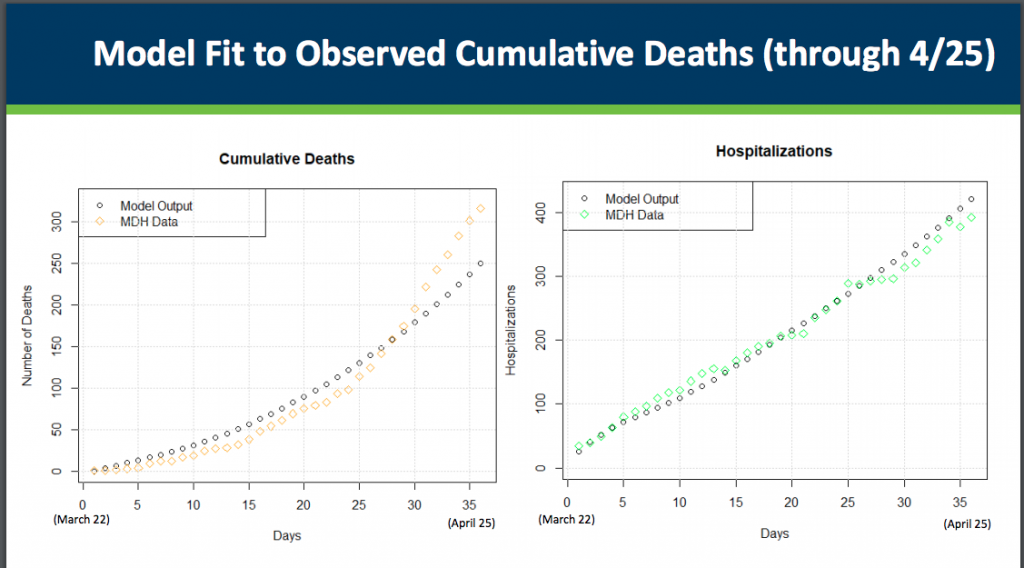
- What?
- Less time to peak epidemic
- Some upward movement in estimates for:
- ICU demand
- Full-epidemic mortality
- Why?
- Calibration to rising MN deaths
- Mitigation less effective than assumed for:
- initial physical distancing (38%, not 50%)
- Stay at home order (59.5% not 80%)
- Changes to ICU mortality assumptions and data
Model Changes: “Stay at Home Order in Place for 6 Weeks”
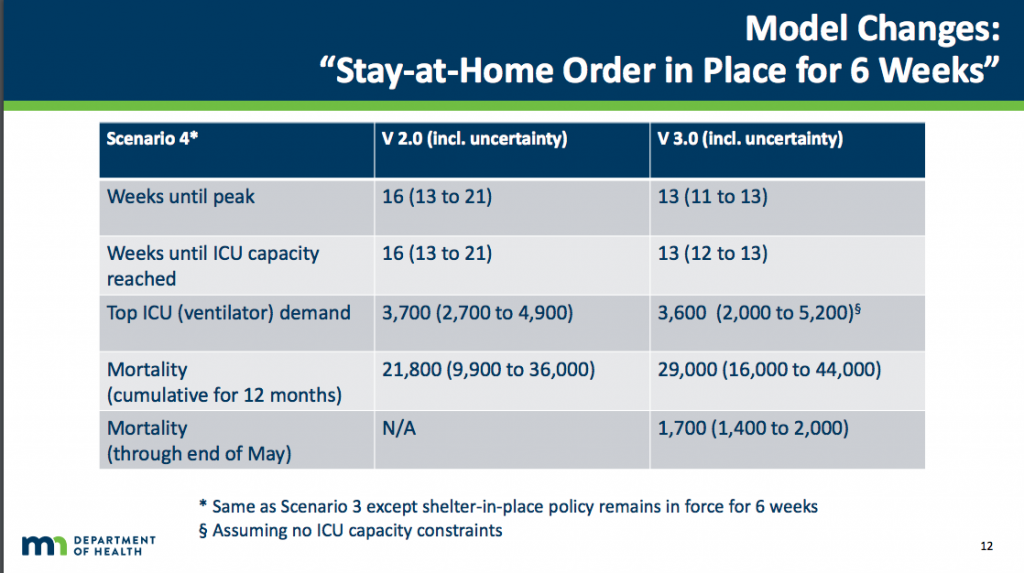
Unmitigated and Extended Stay at Home Orders:
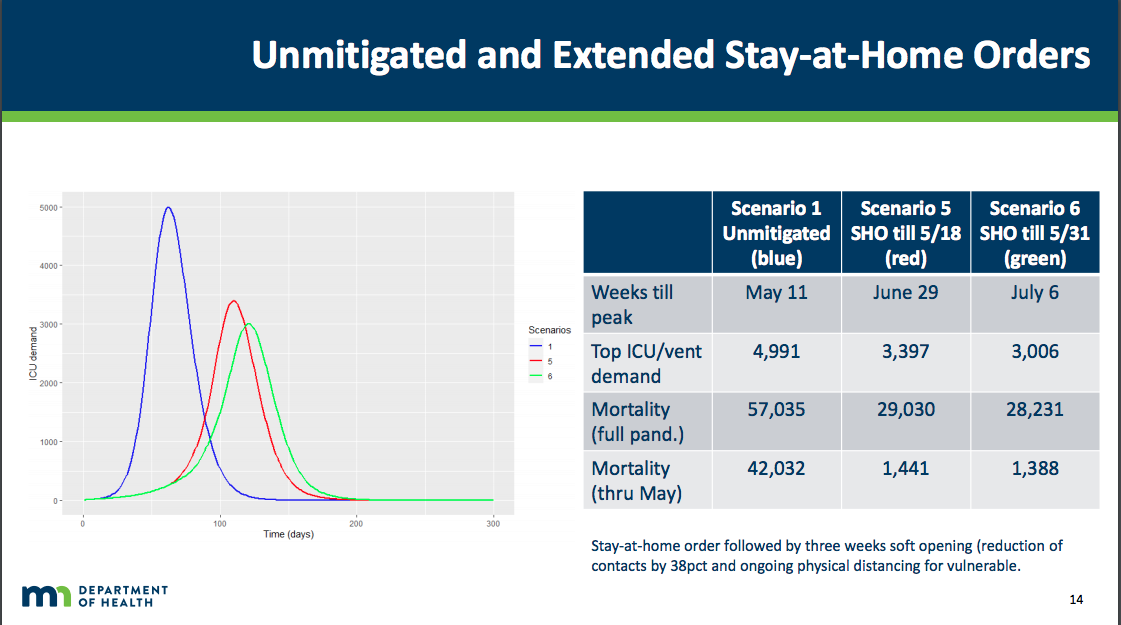
Extended Stay at Home Orders and Testing:
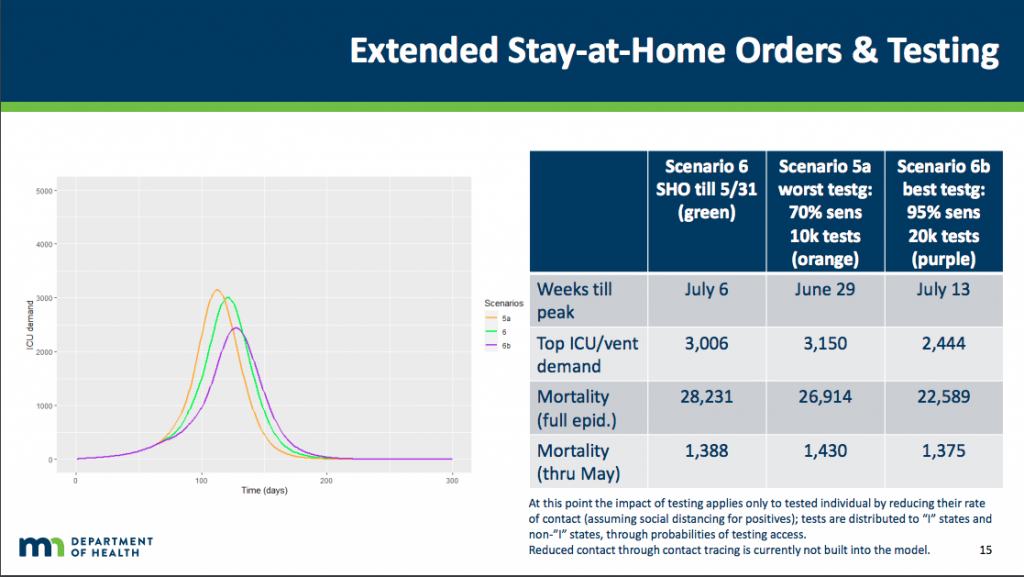
Extended Stay at Home Order, CDC Guidelines for “Opening Up” and Medical Advancement
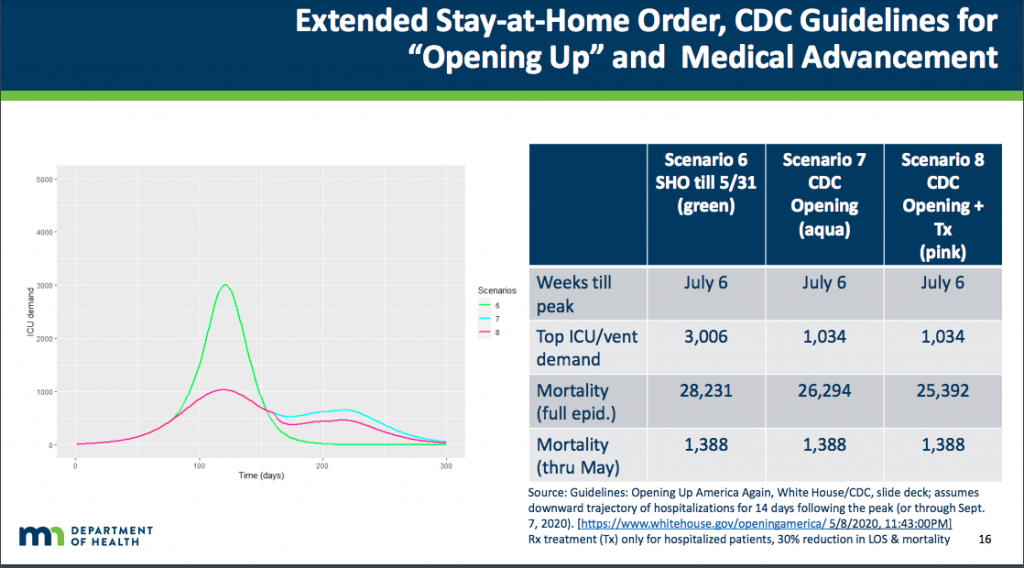
Daily Deaths — All Scenarios
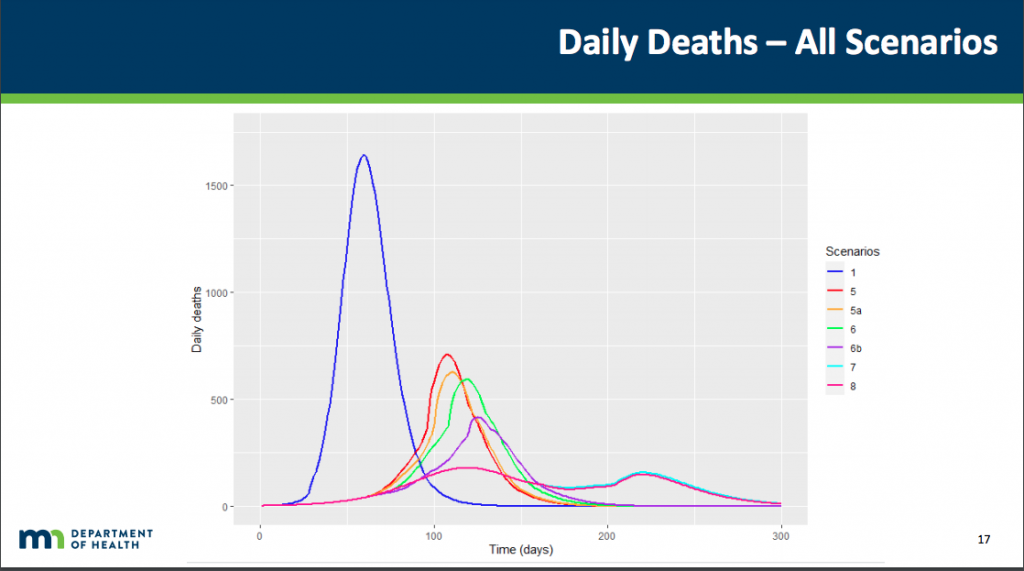
Consideration for Next Steps
- More and better data from U.S. epidemic
- Refined Scenarios
- Treatment: evidence on home treatment
- Testing: Incorporate impact of contact tracing
- Enhancements: cycling mitigation
Additional notes from the presentation:
- For a look at all of the slides from the MDH presentation, you can go to: https://mn.gov/covid19/assets/MNmodel_PPT%205.13.20_FINAL%20915AM_tcm1148-431824.pdf
- For a technical document that explains the model in more detail, you can go to: https://mn.gov/covid19/assets/MNmodel_TechnicalDoc_5.13.20_tcm1148-431812.pdf
- “We hope these are pessimistic estimates, but it’s certainly a plausible outcome,” said Stefan Gildemeister, state health economist.
- 1,441 deaths through May under scenario 5, scenario 6 – 1,388 deaths (currently at 638 deaths in MN as of 5/13).
- Deaths would fall if testing ramps up (goal 20,000 tests per day)
- Reopening businesses – would reduce peak, but spread a higher number of cases over longer time
- Models will continue to be revamped to indicate better testing and contact tracing.
- “Just buying time without using it will not dramatically change of the disease,” said Gildemeister, referring to testing and other options to improve mortality totals and cases
- Better treatment options and contact tracing and better care situation will help save more lives.
- Deaths haven’t reached more than 30 per day.
- When asked whether the model will quickly go out-of-date, Commissioner Jan Malcolm said, “The model is never really going to be able to be refined enough to pick up all of those effects about intervention.”
Brooklyn Center | Brooklyn Park | Crystal | Golden Valley | Maple Grove | New Hope | Osseo | Plymouth | Robbinsdale


